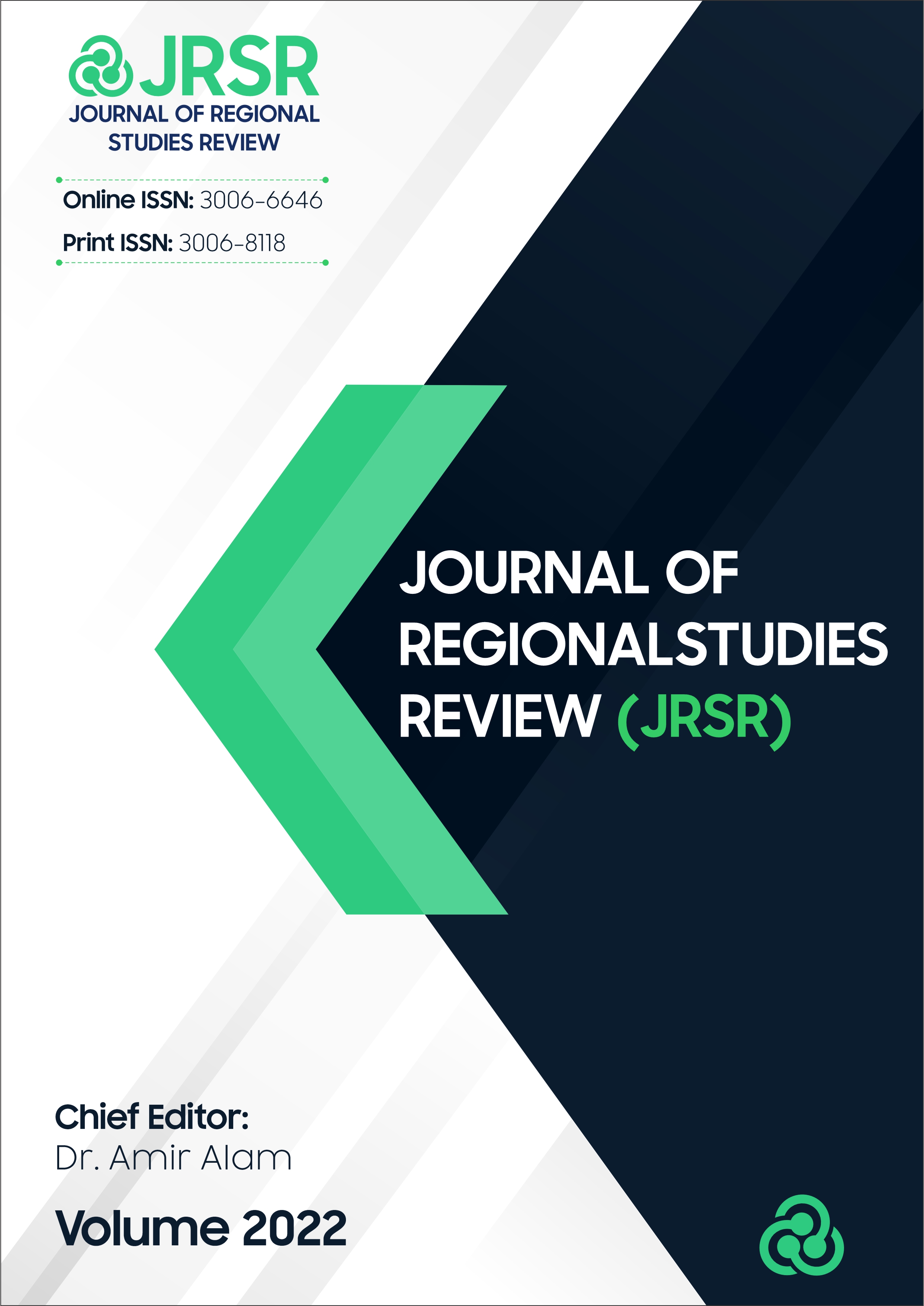India, the US, and China as a Geopolitical Triangle
DOI:
https://doi.org/10.62843/jrsr/2022.51506Keywords:
Geopolitics, US, India, China, Geopolitical Landscape, Strategic TriangleAbstract
This article examines the complex interactions of the geopolitical triangle comprised of India, the United States, and China, investigating the multifaceted relationships and changing power dynamics among these significant global actors. Nowadays, interaction between these countries has become more and more crucial in influencing the geopolitical situation. This paper analyses the historical backdrop of their contacts, emphasizing the geopolitical, economic, and security aspects that shape their connections. Amidst changing global power dynamics, India emerges as a significant participant, maintaining a delicate equilibrium in its relationships with both the United States and China. The article examines India's strategic decision-making and diplomatic actions, considering its longstanding stance of non-alignment, economic ambitions, and worries regarding regional security. Simultaneously, the United States and China participate in an intricate interplay of collaboration and rivalry as their interests align and diverge across multiple domains. A fragile balance defines the geopolitical triangle, as each nation seeks its own national goals while managing the difficulties presented by regional and global intricacies. The article examines the influence of this triangular relationship on the stability of the area, economic collaborations, and security structures. Furthermore, it examines how new factors such as technology, trade, and climate change contribute to the formation of geopolitical dynamics among these nations.
References
Art, R. J. (2010). The United States and the Rise of China: Implications for the Long Haul. Political Science Quarterly, 125(3), 359–391. http://www.jstor.org/stable/25767046
Cohen, S. B. (1991). Presidential Address: Global Geopolitical Change in the Post-Cold War Era. Annals of the Association of American Geographers, 81(4), 551–580. http://www.jstor.org/stable/2563424
Comeau, L. (2003). Democracy and Growth: A Relationship Revisited. Eastern Economic Journal, 29(1), 1–21. http://www.jstor.org/stable/40326455
Fordham, B. O., & Kleinberg, K. B. (2011). International Trade and US Relations with China. Foreign Policy Analysis, 7(3), 217–236. http://www.jstor.org/stable/24909795
Gancheng, Z. (2016). China-U.S.-India. China Quarterly of International Strategic Studies, 02(01), 1–16. https://doi.org/10.1142/s2377740016500019
Ghori, K. K. (2014). The Role of the US in 21st Century Pakistan-India Relations. Pakistan Horizon, 67(1), 23–41. http://www.jstor.org/stable/23726075
Hang, N. T. T. (2016). The US Rebalance towards the Asia-Pacific: Really Realist? Journal of Asian Security and International Affairs, 3(3), 291–306. https://www.jstor.org/stable/48602151
Haruko, W., & -. (2020). The "Indo-Pacific" concept: Geographical adjustments and their implications. Nanyang Technological University.
Holmes, J. R., & Yoshihara, T. (2008). CHINA AND THE UNITED STATES IN THE INDIAN OCEAN: An Emerging Strategic Triangle? Naval War College Review, 61(3), 40–60. http://www.jstor.org/stable/26396943
Hornát, J. (2015). The power triangle in the Indian Ocean: China, India and the United States. Cambridge Review of International Affairs, 29(2), 425–443. https://doi.org/10.1080/09557571.2014.974507
Jiang, Y., Zhu, Z., Tian, G., & Nie, H. (2019). Determinants of within and cross-country economic policy uncertainty spillovers: Evidence from US and China. Finance Research Letters, 31. https://doi.org/10.1016/j.frl.2019.08.004
Katti, V. (2007). India and the Regional Economic Integration in South Asia. Indian Foreign Affairs Journal, 2(4), 93–116. http://www.jstor.org/stable/45340698
Khalid, S. (2020, May 28). ‘all-out combat’ feared as India, China engage in border standoff. Al Jazeera. https://www.aljazeera.com/news/2020/5/28/all-out-combat-feared-as-india-china-engage-in-border-standoff
Konwer, S. (2011). INDIA-CHINA RELATIONS: LIMITED COOPERATION AND A CHEQUERED FUTURE. The Indian Journal of Political Science, 72(1), 283–292. http://www.jstor.org/stable/42761828
Madan, T. (2017, July 11). The U.S.-India relationship and China. Brookings. https://www.brookings.edu/articles/the-u-s-india-relationship-and-china/
Malik, M. (2016). Balancing Act: The China-India-U.S. Triangle. World Affairs, 179(1), 46-57. https://doi.org/10.1177/0043820016662742
Markey, D. S. (2021, April 19). Preparing for heightened tensions between China and India. Council on Foreign Relations. https://www.cfr.org/report/preparing-heightened-tensions-between-china-and-india
Mastro, O. S. (2020, May 20). Military confrontation in the South China Sea. Council on Foreign Relations. https://www.cfr.org/report/military-confrontation-south-china-sea
Panda, J. (2020, June 12). India and the ‘Quad plus’ dialogue. Royal United Services Institute. https://www.rusi.org/explore-our-research/publications/commentary/india-and-quad-plus-dialogue
Rauch, C. (2008). Farewell Non-Alignment? Constancy and Change of Foreign Policy in Post-Colonial India, PRIF Report 85. PRIF Report 85.
Schmidt, J. D. (2014). The Asia-Pacific Strategic Triangle: Unentangling the India, China, US Relations on Conflict and Security in South Asia. Journal of Asian Security and International Affairs, 1(2), 203-222. https://doi.org/10.1177/2347797014536641
Smith, S. A. (2021, May 27). The quad in the Indo-Pacific: What to know. Council on Foreign Relations. https://www.cfr.org/in-brief/quad-indo-pacific-what-know
Tanzeem, A. (2016, December 6). Tensions between India, Pakistan undermining regional alliances. Voice of America. https://www.voanews.com/a/tensions-between-india-pakistan-undermining-regional-alliances/3625472.html
Xinbo, W. (2000). U.S. Security Policy in Asia: Implications for China—U.S. Relations. Contemporary Southeast Asia, 22(3), 479–497. http://www.jstor.org/stable/25798508
Yu, H. (2017). China’s Belt and Road Initiative and Its Implications for Southeast Asia. Asia Policy, 24, 117–122. https://www.jstor.org/stable/26403210
Yuan, J. (2011). BEIJING’S BALANCING ACT: COURTING NEW DELHI, REASSURING ISLAMABAD. Journal of International Affairs, 64(2), 37–54. http://www.jstor.org/stable/24385533



